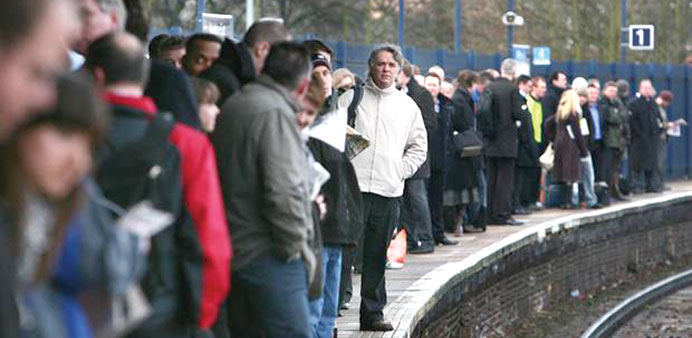Evening Standard/ London
Rail commuters into central London are facing inflation-busting hikes of up to hundreds of pounds in the cost of their annual season ticket.
They are set to rise on average by 3.5% in January — nearly six times the rise in wages, according to the latest figures for the year to June.
Such an increase would push the cost of a yearly season ticket from Swindon to central London up by £280 next year, from Peterborough by £248, Canterbury £174, Brighton £151 and Guildford £116.
These increases will mean a rising number of commuters will have seen their annual season ticket rise by more than £1,000 from 2010 to 2015.
But there was better news for cash-strapped households, with inflation based on the CPI measure falling from 1.9% to 1.6%, easing pressure on the Bank of England to hike interest rates.
Rail companies stressed the decision over the rises on regulated fares — which include commuter, season and other tickets — was down to the covernment. Chancellor George Osborne will be under huge pressure to restrict the increases, just five months before the general election, to no more than inflation, as he did this year.
Rail minister Claire Perry pledged there was an “ongoing conversation” with the treasury over rail fares. She added: “What we have got to do is make sure passengers, who could be forgiven for thinking ‘What on earth am I getting for these rises I’ve seen over the last decade?’, start to realise that they are paying fair fares.”
But the looming rise was condemned by Labour. “David Cameron has failed to stand up for working people struggling with the cost-of-living crisis,” said shadow transport secretary Mary Creagh. The increase in regulated fares is set under a formula of RPI inflation for July, confirmed as 2.5%, plus one per cent.
Train firms can hike some of these prices by a further 2% but have to offset this with similar cuts to other fares. This means some commuters could see increases of up to 5.5%, while others less than 3.5.
Michael Roberts, director-general of the Rail Delivery Group, stressed there were plans to tackle overcrowding. He told BBC Breakfast: “Money raised by fares has gone in to investing in the network. We are investing in more trains, better tracking and signalling.”
London’s property buyers are prepared to pay an average of £42,000 extra to secure a home within a five-minute walk of an Underground or railway station, a new survey claims.
The “station premium” has widened drastically from £27,000 in the past two years, as improvements to the Tube and Overground networks have made access to public transport even more valuable for home- owners.
The survey, by the Nationwide building society, looked at prices at various distances from stations, ranging from 500m — equivalent to a brisk five-minute stroll — and 1,500m, which is almost a mile and takes around 15 minutes to walk.
In Southfields in south west London the average sale price at 500m from the District line Tube station is £551,800. But on streets that are three times further away prices are £52,000 lower, at £499,300.
There is a similar pattern in Streatham in south London where there is a £42,400 difference, and in High Barnet on the Northern Line with a £39,100 premium.
Nationwide’s chief economist Robert Gardner said: “Our research illustrates that people are prepared to pay a significant premium to be close to a station. It also suggests that this premium has increased relative to two years ago when we last explored the issue.” The Nationwide analysis shows that across London prices are 10.5% higher at 500m distance, falling to 7.6% at 750m, 4.9 per cent at 1,000m and 2.3% at 1,250m.
The best-connected borough, Camden, where 85% of homes are within 500m of a station, also has some of the highest prices.
Among the outer London boroughs Brent has the best links with 50% of addresses in the 500m premium zone.
By contrast relatively inexpensive Havering, Bexley and Barking & Dagenham have the worst links with fewer than 20% within 500m. The “station effect” is also much more marked in London than in other big cities. In Glasgow the premium is only 6% and in Manchester it is just 4.6%.
Gardner said: “London has the densest network of stations and services with 94% within reach compared with 72% in Greater Glasgow and 69% in Greater Manchester.”
The “most expensive” Underground line is the Circle, where the average price of properties which are near stations is £802,601.
The cheapest is the Metropolitan line, much of which stretches through the less pricey outer suburbs, with an average of £369,417.

Commuters face a crushing increase in fares.


